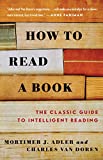In the classic book on reading “How to read a book,” Adler distinguishes four levels of reading: elementary, inspectional, analytical, and syntopical.
Syntopical reading (an arcane term, in our view, that requires an update but a useful concept nevertheless) is the kind of reading where a specific topic, and the readers’ concerns with that topic, take center-stage over the book that is being read. In other words, “it is you and your concerns that are primarily to be served, not the books that you read.”
In other words, “it is you and your concerns that are primarily to be served, not the books that you read.” In this type of reading, it is you, the reader who is in the drivers’ seat, not the author. According to Adler:
Syntopical reading is not an easy art, and that the rules for it are not widely known. Nevertheless, syntopical reading is the most active and effortful kind of reading.
It is also the most rewarding kind of reading, if only you know how. This is the kind of reading that is most useful in today’s world, but the kind that is rarely taught in schools or universities. So how do you read “synoptically”?
There are two main stages of syntopical reading. One is preparatory, and the other is syntopical reading proper. I would add a step 0 to this, which is about identifying and articulating your topic – something that is not as trivial as one might think. But let’s assume for a moment that you have a good definition of the topic you want to tackle, and you acknowledge that your ambition to understand it goes broader and deeper than any one book would be able to satisfy. Let’s proceed to Step 1.
Stage I. Preparatory: Survey the Field
1. Create a tentative bibliography of your subject.
In the world of Adler, this was done through a recourse to library catalogues, advisors, and bibliographies in books.In modern world, this would be more of the art of the internet search to shortlist the books and articles you want to read. Personally, I like to tackle this with a list of prominent thinkers in the field and tracking down the bibliography of the author. Start with books or start with authors – the intent is to have a first list of good reading material.
2. Inspect all of the books on the tentative bibliography to ascertain which are germane to your subject, and also to acquire a clearer idea of the subject.
Inspecting a book has two stages to it – systematic skimming and superficial reading. The intent here is to get, in as short a time as possible, a good understanding of what this book about, what kind of book this is, and whether you want to spend more time on this book. Inspectional reading is done quickly because the goal is to get the gist of the book and the overarching idea.
You could also read abstracts or reviews (even though Adler warns against relying on them too much, and I concur with it to some extent – someone else’s interpretation of the book might not be the same as what the author intended). The trick to using abstracts and reviews correctly is to read them with a critical mind, even more than you would do with a book.
A particularly useful aid, which was probably not as easily available in Adler’s age, is short talks/videos, long form articles and reviews with the prominent thinkers/critics. This could help you get the gist of a writer’s work, at least to the extent to decide whether you want to dive deeper into it.
Stage II. Syntopical Reading of the materials from stage I
1. Find the most relevant passages:
Based on the inspectional reading you did in Stage I, figure out which are the most relevant passages/sections to read. Don’t try to read them all and be as selective as you can be. Less is more, in my opinion, in this step.
2. Bring the authors to terms:
This is Adler’s way of saying – establish your own terminology on the subject. Keep is as neutral as you can, which will help to translate and synthesize multiple authors towards a structure or system of your choosing.
3. Frame a set of questions:
I find this the most important step of the process – whereby you establish the questions and sub-questions you want to answer. These questions may not be directly answered by the authors, but the “detective work” of reading will be to find the indirect clues that provide the pathway towards them.
4. Define the issues:
This is about finding answers to the questions you framed in step 3, but in a way that is your interpretation of it. An independent perspective is key to this step.
5. Analyze the discussion:
This is best done by ordering the questions and issues in such a way as to throw maximum light on the subject. The key output of this step has to be an orderly arrangement of the different issues/arguments on the topic, organized in a way that it answers your questions and makes clear their relationship to each other.
2 Stages. 7 steps in total. Syntopical reading is not for the casual reader, but if you are about to tackle a new topic, or would like to deepen your expertise in one you are merely acquainted with, following this steps would be to your benefit. It would give you breadth and depth, with minimal time spent. Try it out!

